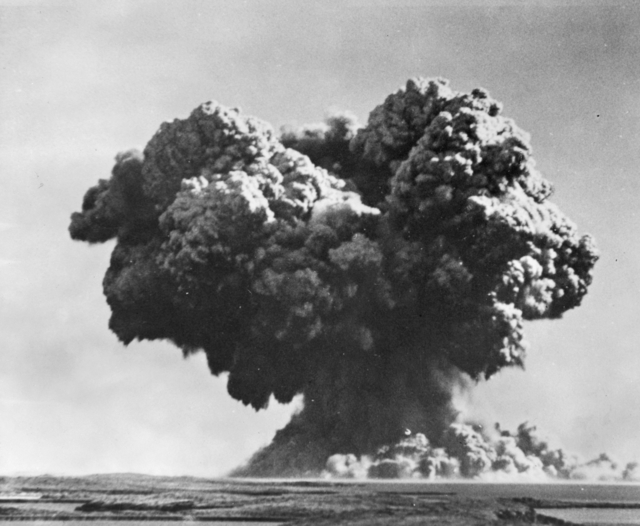Operation Hurricane was the first test of a British atomic device. A plutonium implosion device was detonated on 3 October 1952 in the lagoon in the Monte Bello Islands in Western Australia. With the success of Operation Hurricane, Britain became the third nuclear power after the United States and the Soviet Union.
The United Kingdom had embarked on its own atomic weapons programme in 1947. As the British mainland was considered unsuitable for nuclear testing due to its small size and high population density, the British government requested Australia to provide a permanent nuclear test site, to which the latter agreed. This decision by Australian Prime Minister Robert Menzies was later questioned increasingly.
Between 1952 and 1957, the UK conducted a total of 12 atmospheric nuclear tests on Australian territories at the Montebello Islands, Maralinga and Emu Field. Following a 1958 agreement with the United States, both countries subsequently cooperated closely in the development of nuclear weapons and all British tests were conducted at the Nevada Test Site in the USA.
Operation Hurricane was specifically designed to test the effects of a nuclear weapon smuggled into a British harbour onboard a ship, which was already a concern at the time. For this purpose, a 25-kiloton plutonium implosion bomb was detonated inside the hull of the frigate HMS Plym, anchored in a lagoon between the Montebello Islands. This was a similar procedure to the U.S. ‘Able’ test at the Bikini Atoll in 1946, which ‘used’ 78 ships. The explosion left a crater 6 metres deep and 300 metres wide on the ocean floor, and the mushroom cloud from the detonation rose up to 4.5 kilometres into the sky.
The device was a close copy of ‘Fat Man’, the U.S. bomb dropped on Nagasaki seven years earlier. Based on the Hurricane test, the UK developed its first deployable nuclear weapon, the Blue Danube.
The impact of British testing in Australia remains a matter of contention until today. Although the Montebello Islands were uninhabited, the atmospheric nuclear tests spread radioactivity across large parts of the Australian mainland. Fallout from the testing at the Aborigine territories in Emu Field and Maralinga contaminated large parts of South Australia.

